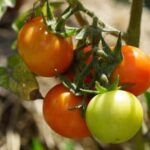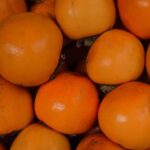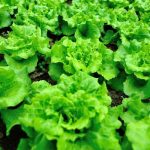Are you interested in learning how to grow perennial vegetables for a low-maintenance, low-impact vegetable garden? Perennial vegetables are a great addition to any garden as they require minimal care and can provide an abundant harvest year after year.
In this article, we will explore the world of perennial vegetables and discuss the benefits of growing them. We will also provide valuable tips on choosing the right perennial vegetables for low-maintenance gardening and share advice on low-impact vegetable gardening practices.
Perennial vegetables are plants that live for more than two years, producing edible parts year after year without needing to be replanted. This makes them an excellent choice for those looking to create a sustainable and self-sufficient garden. By incorporating perennial vegetables into your garden, you can enjoy a variety of nutritious produce with minimal effort.
In the following sections, we will delve into the numerous advantages of growing perennial vegetables and provide guidance on selecting the best varieties for your low-maintenance garden. Additionally, we will offer tips on low-impact gardening techniques that not only benefit the environment but also make gardening more manageable and sustainable.
Whether you’re new to gardening or an experienced gardener looking to simplify your efforts, this article will serve as a valuable resource for creating a thriving perennial vegetable garden.
Benefits of Growing Perennial Vegetables
Growing perennial vegetables has numerous benefits, making them a great addition to any low-maintenance, low-impact vegetable garden. Some of the advantages of growing perennial vegetables include:
- Longevity: Perennial vegetables come back year after year, reducing the need for replanting and saving time and effort.
- Sustainability: Because they don’t need to be replanted annually, perennial vegetables can help reduce the environmental impact of gardening by conserving resources such as water, soil, and energy.
- Nutritional value: Many perennial vegetables are nutrient-dense, providing a source of fresh, healthy produce with minimal effort.
In addition to these benefits, growing perennial vegetables can also contribute to biodiversity in your garden. By cultivating a variety of perennial vegetables, you can support a diverse ecosystem and promote natural pollination and pest control.
Furthermore, perennial vegetables often have deep root systems that help improve soil structure and health. This means that they can help prevent erosion, enhance water retention, and increase overall soil fertility. Overall, incorporating perennial vegetables into your garden can offer a sustainable and eco-friendly approach to vegetable gardening while providing an abundance of fresh produce year after year.
Choosing the Right Perennial Vegetables for Low-Maintenance Gardening
Understanding Your Climate and Soil
When choosing perennial vegetables for a low-maintenance garden, it’s important to consider your local climate and soil conditions. Some perennial vegetables thrive in specific climates and soil types, so be sure to research which ones are best suited for your area. For example, asparagus does well in cooler climates, while sweet potatoes prefer warmer regions. Understanding your climate and soil will help you select the right perennial vegetables for your garden.
Consider Space and Sunlight
Another factor to consider when choosing perennial vegetables is the available space and sunlight in your garden. Some vegetables like artichokes and rhubarb require plenty of space to spread out, while others such as chives and mint can thrive in smaller areas. Additionally, make sure to plant vegetables that require full sun in spots that receive ample sunlight throughout the day. Taking these factors into account will help you maximize the potential of your low-maintenance perennial vegetable garden.
Choose Low-Maintenance Varieties
In order to truly achieve a low-maintenance vegetable garden, it’s crucial to select perennial vegetables that are relatively easy to care for. Look for varieties that are disease-resistant, pest-resistant, and require minimal attention once established. For example, garlic chives are known for their hardiness and resistance to pests, making them an excellent choice for low-maintenance gardening. By choosing low-maintenance varieties, you can enjoy the benefits of perennial vegetables with minimal effort.
Tips for Low-Impact Vegetable Gardening
When it comes to low-impact vegetable gardening, there are several practices that can help minimize the environmental footprint of your garden while still ensuring a bountiful harvest. Here are some tips to consider:
- Companion planting: Pairing different types of plants together can benefit each other by attracting beneficial insects or repelling pests. For example, planting marigolds alongside vegetables can help deter nematodes and other harmful organisms.
- Mulching: Using organic mulch such as straw, leaves, or grass clippings can help retain moisture in the soil, suppress weeds, and improve soil structure. This reduces the need for irrigation and synthetic herbicides.
- Water conservation: Implementing water-saving techniques like drip irrigation or collecting rainwater can significantly reduce water usage in the garden. Additionally, selecting drought-tolerant perennial vegetables can further minimize the need for irrigation.
By incorporating these low-impact gardening practices, you can create a sustainable and environmentally friendly vegetable garden that yields nutritious produce year after year.
Preparing the Soil for Perennial Vegetable Garden
The success of any garden, including a perennial vegetable garden, heavily depends on the quality of the soil. Preparing the soil for a perennial vegetable garden is crucial to ensure the plants have access to the necessary nutrients and moisture for their long-term growth. Before planting any perennial vegetables, it’s important to assess and improve the soil as needed.
To prepare the soil for a perennial vegetable garden, start by testing its pH levels. Most perennial vegetables thrive in slightly acidic soil with a pH between 6.0 and 7.0. If the pH level is too high or too low, you can adjust it by adding lime to raise the pH or sulfur to lower it. Additionally, adding organic matter such as compost or well-rotted manure can help improve the soil structure and fertility.
Another important step in preparing the soil is proper tillage. Loosening the soil with a tiller or garden fork can help create an ideal environment for plant roots to grow and access nutrients. However, over-tilling can disrupt the natural ecosystem of the soil and lead to loss of beneficial microorganisms.
Furthermore, consider mulching your perennial vegetable garden once you’ve planted your crops. Mulch helps retain moisture in the soil, suppresses weed growth, and adds organic matter as it breaks down over time. This is especially beneficial in low-maintenance gardening as it reduces the need for frequent watering and weeding. Properly preparing your soil sets a strong foundation for your perennial vegetable garden, leading to healthy plants that will yield bountiful harvests year after year.
Planting and Caring for Perennial Vegetables
Choosing the Best Location for Perennial Vegetables
When planting and caring for perennial vegetables, it is important to choose the right location. Most perennial vegetables thrive in full sun, so it is important to select a spot in your garden that receives at least 6-8 hours of sunlight per day. Additionally, you will want to consider soil drainage and fertility. Perennial vegetables tend to prefer well-drained soil that is rich in organic matter.
Proper Planting Techniques
Before planting perennial vegetables, make sure to prepare the soil by removing any weeds and adding compost or other organic matter. When planting, be sure to space the plants according to their specific requirements. It is also important to plant them at the appropriate depth and water them thoroughly after planting.
Caring for Perennial Vegetables
Once your perennial vegetables are established, they require minimal maintenance. However, it is important to provide regular water during dry periods, especially during their first year of growth. Mulching around the plants can help retain moisture and suppress weeds. In addition, some perennial vegetables may benefit from being fed with a balanced fertilizer once a year in early spring.
By choosing the best location for your perennial vegetables, using proper planting techniques, and providing minimal care as they grow, you can enjoy a bountiful harvest with low-maintenance gardening.
Managing Pests and Diseases in Low-Maintenance Gardens
When it comes to low-maintenance gardening, one of the key challenges is managing pests and diseases without resorting to high-maintenance solutions. Fortunately, there are several strategies that can be employed to minimize the impact of pests and diseases on your perennial vegetable garden.
One approach to pest management in low-maintenance gardens is to encourage natural predators that feed on common garden pests. For example, planting flowers such as marigolds and calendula can attract beneficial insects like ladybugs and lacewings, which prey on aphids and other harmful pests. Additionally, creating a habitat for birds through the use of bird baths, feeders, and nesting boxes can help control pest populations in the garden.
In terms of disease management, proper plant spacing and good airflow are critical for preventing the spread of fungal diseases in low-maintenance gardens. It’s also important to avoid working with wet plants to prevent the transfer of disease between plants. Using disease-resistant varieties of perennial vegetables can also go a long way in reducing the likelihood of disease outbreaks in your garden.
| Beneficial Insects | Disease-Resistant Varieties |
|---|---|
| Ladybugs | Blanch leeks (Allium porrum) |
| Lacewings | Rhubarb (Rheum rhabarbarum) |
| Birds | Asparagus (Asparagus officinalis) |
Harvesting and Preserving Perennial Vegetables
Harvesting and preserving perennial vegetables is a rewarding aspect of low-impact gardening. Unlike annual vegetables, perennial vegetables can be harvested year after year without having to replant. This makes them a sustainable option for any vegetable garden.
When it comes to harvesting, it is essential to know the right time to pick each vegetable. For example, asparagus should be harvested when the spears are about 6-8 inches tall, while rhubarb stalks should be harvested in the spring before they become too tough.
Preserving perennial vegetables can be done through various methods such as freezing, pickling, or dehydrating. Freezing is a simple way to preserve many types of perennial vegetables. Blanching the vegetables before freezing helps maintain their flavor, color, and nutritional value.
Pickling is another popular method that works well for certain types of perennial vegetables like garlic scapes and Jerusalem artichokes. Dehydrating is an effective way to preserve herbs such as oregano, sage, and thyme for use in cooking throughout the year.
In addition to preserving harvested perennial vegetables, it’s important to properly store them. Some can be stored in a cool, dark place for long periods of time, while others may need to be refrigerated or frozen immediately after harvesting. Proper storage ensures that you can enjoy the fruits of your low-maintenance gardening efforts well beyond the harvest season.
| Perennial Vegetable | Best Harvest Time |
|---|---|
| Asparagus | When spears are 6-8 inches tall |
| Rhubarb | In the spring before they become too tough |
| Globe Artichoke | Before the flowers open but after they have developed nicely |
Conclusion
In conclusion, growing perennial vegetables is a great way to enjoy a low-maintenance, low-impact vegetable garden. By choosing the right perennial vegetables and following the tips for low-impact gardening, you can reap the benefits of a bountiful harvest with minimal effort and environmental impact. It’s important to remember that preparing the soil and managing pests and diseases are crucial aspects of maintaining a successful perennial vegetable garden.
Furthermore, harvesting and preserving your perennial vegetables allows you to enjoy the fruits of your labor all year round. Whether you choose to freeze, can, or pickle your harvest, preserving your vegetables ensures that you can savor their flavors long after the growing season has ended. Additionally, by growing perennial vegetables, you are contributing to sustainability and reducing the carbon footprint associated with traditional annual vegetable gardening.
Ultimately, growing perennial vegetables for low-maintenance, low-impact gardening not only benefits the environment but also provides you with an abundance of fresh, nutritious produce. So why not give it a try? With the right knowledge and care, you can create a thriving perennial vegetable garden that will bring joy and sustenance for years to come. Happy gardening.

If you’re looking to get into vegetable gardening, or are just looking for some tips on how to make your current garden better, then you’ve come to the right place! My name is Ethel and I have been gardening for years. In this blog, I’m going to share with you some of my best tips on how to create a successful vegetable garden.





